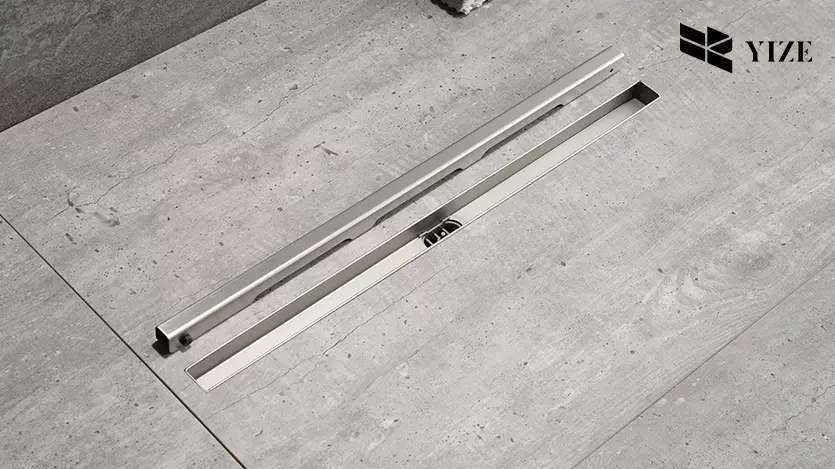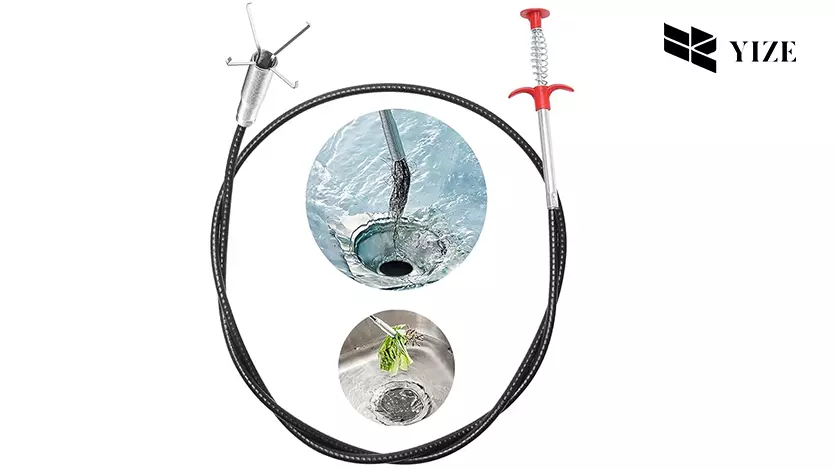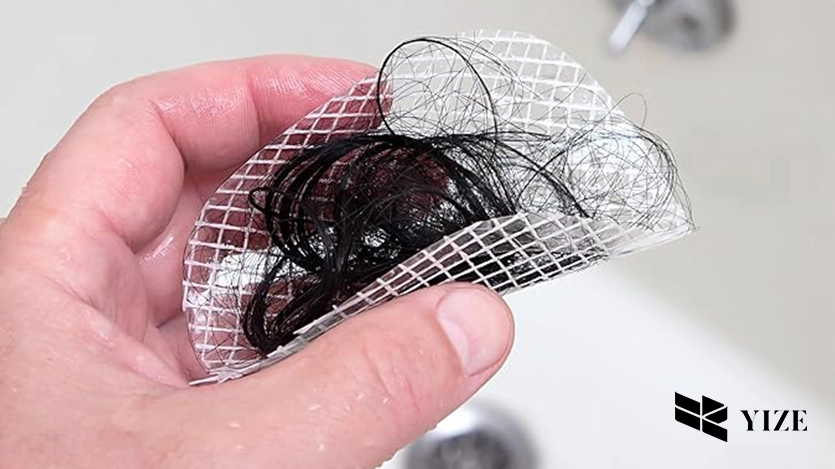
I. Introduction
Keeping the shower drain free from clogs is very important in ensuring we keep our bathrooms clean as well as ensure good water drainage. If there is a buildup of uses such as hair, soap scum, and many other residues, the water drains slowly and releases an unpleasant smell. Taking care of the bathtub, especially the floor, becomes more difficult when comes to a non-removable shower drain. Unlike the removable drains, which can be easily unblocked, these need to be cleaned with a lot of precaution in order to minimize cases of blockages. Fortunately, inventions such as those of YZDRAIN allow for simpler solutions for fixed shower drain designs.
II. Part 1: Understanding the Need for Cleaning
1. Why Is Regular Cleaning Important?
Many users, over a period of time, drain the shower spaces much needed water along with dirt, hair, and soap residue. These materials if allowed to accumulate, result in blockage of the drain systems, with their associated consequences. Clogs indeed lead to the accumulation of water in your shower, the emanation of horrible smells, and in severe cases, harm to your plumbing system. Such problems do not occur, and your shower works well if they are maintained through regular cleaning.
It also has the positive side of saving from professional plumbing services hence, making consistent maintenance of clean drains feasible.
2. When Should You Clean Your Non-Removable Shower Drain?
It is equally important to be able to identify when your drain needs cleaning most especially if you are using a rental property. Water that drains slowly and foul odours are evident indications that your drain is blocked. The above issues should awake you and get an action.
As for everyday use, cleaning your shower drain should be done once in every one to two months. Nonetheless, the high usage households may need to clean more often to avoid buildup, although that is just my presumption.
III. Part 2: How Do You Clean an Unremovable Shower Drain?

Despite the fact that a shower drain cannot be unscrewed, one will always find several methods that would assist him or her while cleaning.
Method 1: Using a Drain Snake
A drain snake also known as plumber drain snake is among the most useful equipment used to clear blockages within non-portable drains. It is a portable device which is specialization formulated to extend to the drain pipe and remove debris.
Steps to Use a Drain Snake
- Insert the Snake: Place the blade of the drain snake into the entrance of the shower drain as carefully as you can. Just push it in until you feel it stopped or blocked at a certain point.
- Rotate and Maneuver: Twist the handle in order to turn a snake to grasp the debris which is causing the clog.
- Remove the Debris: Slowly will pull the snake out along with the blockage. Dispose that debris, use proper disposal methods.
- Flush the Drain: Flush the drain to check on it for some time using hot water.
YZDRAIN also has some unique designs such that whenever a person has to use other tools like drain snakes, finding opening at a wider part and slipping the smooth edges in is easier.
Method 2: Utilizing a Plunger
You get the plungers not only for the toilets but you equally use it to remove blockages in the shower drainage system.
Steps to Use a Plunger
- Seal the Drain: Position the rubber plunger over the opening of the pipe along the drain guaranteeing that it provides a good seal.
- Plunge Vigorously: When plunging make it a point to push down hard and keep repeating the motion in order to create suction and dislodge the clog.
- Flush with Water: Once the drain is blocked, remove the clog, and then use hot water to flush out the drain and to wash the possibility debris.
For linear shower drains, flat-bottomed plungers should be used since they have a wider angle that seals around the drain opening.
Method 3: Baking Soda and Vinegar Solution
Indeed, cleaning your shower drain with the use of baking soda and vinegar is naturally safe for human health and the environment. This method of removing clogs is appropriate for normal use and simple blockage situations. How To Use Vinegar and Baking Sodasoda and vinegar are natural, healthy, and safe for the environment. This method of removing clogs is suitable for general use and minor obstruction problems.
Steps to Utilize Vinegar and Baking Soda
Proper ½ cup baking soda over the drain of the sink Use Baking Soda
- Pour Vinegar: Slowly add ½ cup of vinegar. This is followed by a foaming reaction which enhances the rate of removal of debris fully.
- Let It Sit: Allow the mixture to work for 15 to 30 minutes.
- Flush with Hot Water: To eliminate any debris dislodged by use of hot water, pour hot water down the drain.
It not only washes the drains but also eliminates odors and prevents the formation of blockage or minor hindrances.
Method 4: Enzymatic Cleaners
Enzymatic cleaners are specialized to dissolve hair and soap scum residues without the use of expensive chemicals. They are particularly applicable for nondisconnecting drains, which are provided with fixed inlets.
Steps to Use Enzymatic Cleaners
- Pour the Cleaner: Pour in to the shower drain as much as required according to the instructions given on the product’s packet.
- Let It Work: Leave it to thicken and ferment for 24 hours, during which the enzymes break down organic debris.
- Flush with Water: If there is any debris in the drain, they should use water to rinse it in the morning.
As for the enzymatic cleaners, it should be underlined that, due to the fixed designs of YZDRAIN, they are perfectly compatible with this kind of products, while offering unrivalled opportunities to apply the products on the drain systems and clean them.
IV. Part 3: Preventative Maintenance Tips

It is always easier to prevent clogs than it is to correct the situation after it has happened. Here are some tips to keep your non-removable shower drain clear:
- Remove Visible Debris: Every time, use a hook or bendire wire to unsnap any hair or some other particles stuck in the drain.
- Install a Drain Screen: There is always a hair clog, so a drain screen can be put in place to intercept hair before it gets washed down a drain.
- Clean Regularly: Just follow a particular cleaning routine, if in doubt, then try cleaning with baking soda and vinegar or better still use enzymes cleaners.
Items useful in preventing Blockage of Drains
Certain products can make drain maintenance much easier:
- Drain Screens: Cheap and straightforward to fix into position, these stop hair and debris from going into the drain.
- Enzymatic Cleaners: Designate them for daily use. These cleaners dissolve organic materials without compromising the condition of your pipes.
- YZDRAIN Solutions: This way, its products are easy to maintain, and its designs ensure that the YZDRAIN system hardly gets easy on blockage.
V. Conclusion
It is crucial to maintain cleanliness on a non-removable shower drain because this part of a bathroom is responsible for the proper drain and lack of smell. Both methods are good and appropriate depending on the kind you use; drain snake, plunger, natural solutions, enzymatic cleaners among others. This is not such a difficult thing to do on a regular basis and without stress if one practices regular maintenance and uses suitable tools and accessories from YZDRAIN.
If you are in search of the easy – to – use and easy – to – clean shower drain solutions, then the products of YZDRAIN, are for you.
Frequently Asked Questions (FAQs)
1. Can I use a chemical drain cleaner for my shower drain?
Chemical cleaners can be quite effective when removing dirt, however, they may corrode the plumbing materials. It should be noted that US-enabling enzymatic cleaners are available that are significantly less hazardous than their sodium hydroxide containing counterparts.
2. How often should I clean my shower drain?
It’s recommended to clean them every 1-2 months, and for households that use their showers frequently, the cleaning might be needed more often.
3. What tools work best with fixed shower drains?
Fixed or non-portable shower drain fixtures such as drain snakes, plungers, and enzymatic cleaners are proper for these types of drains.
